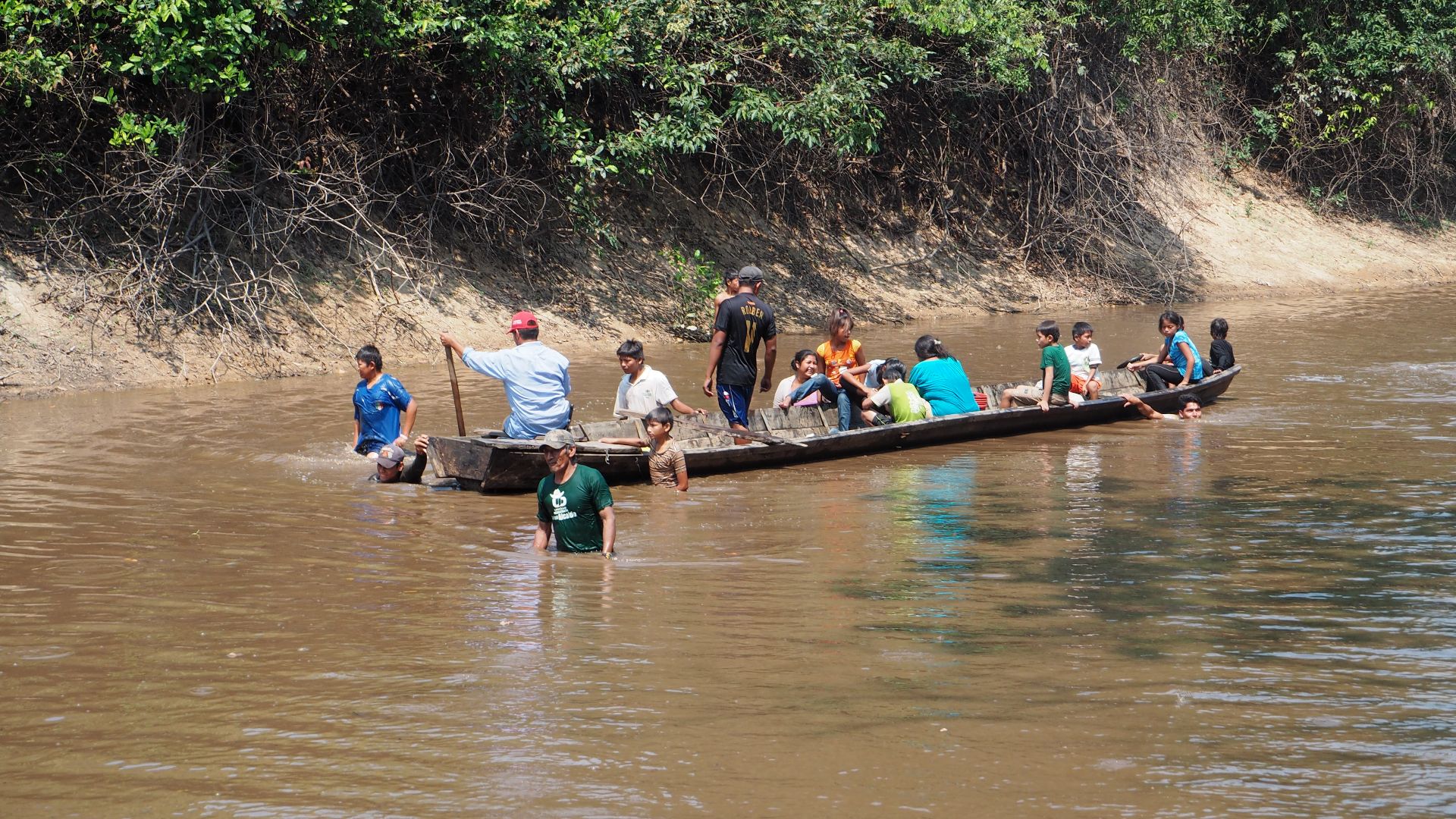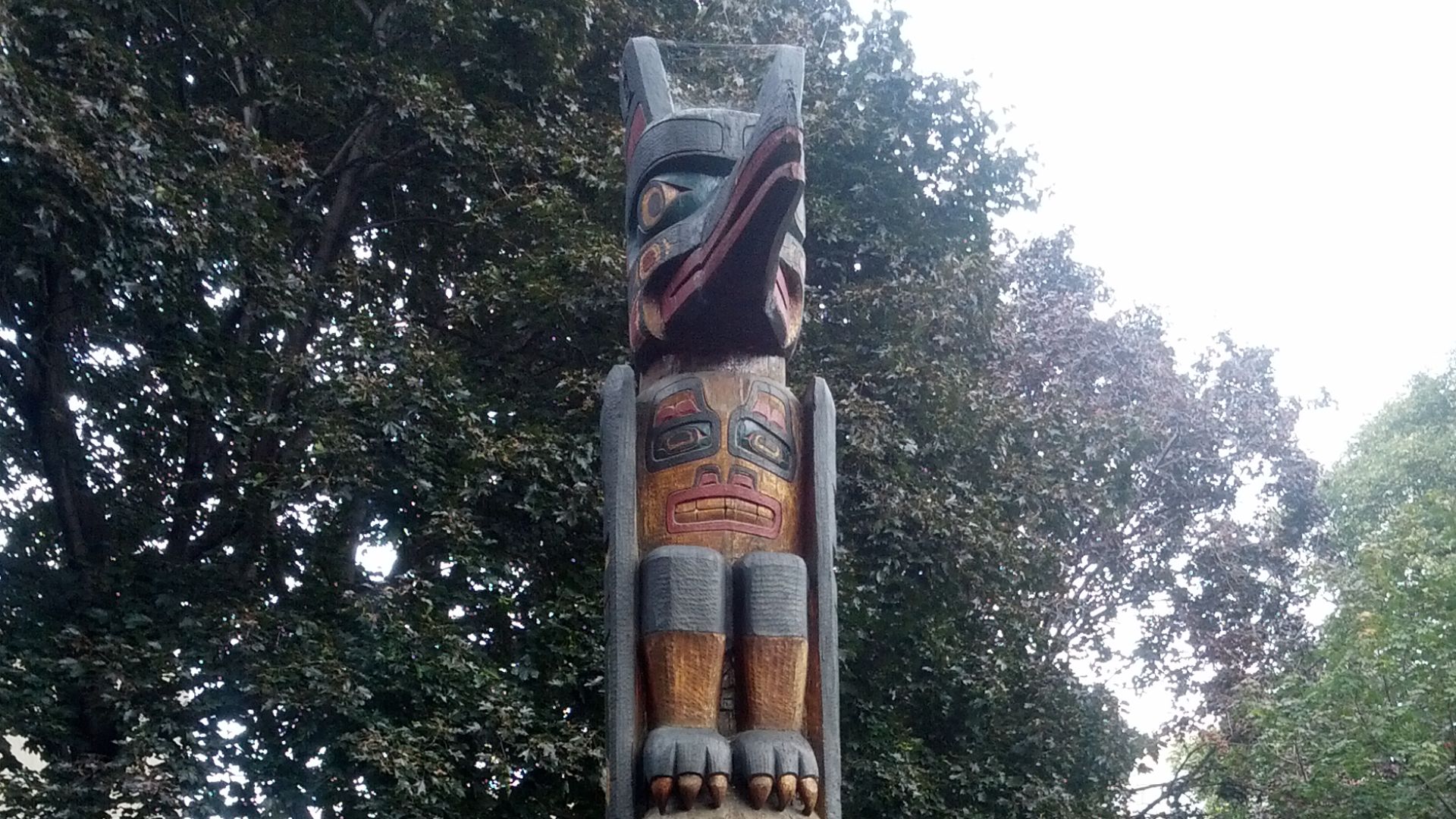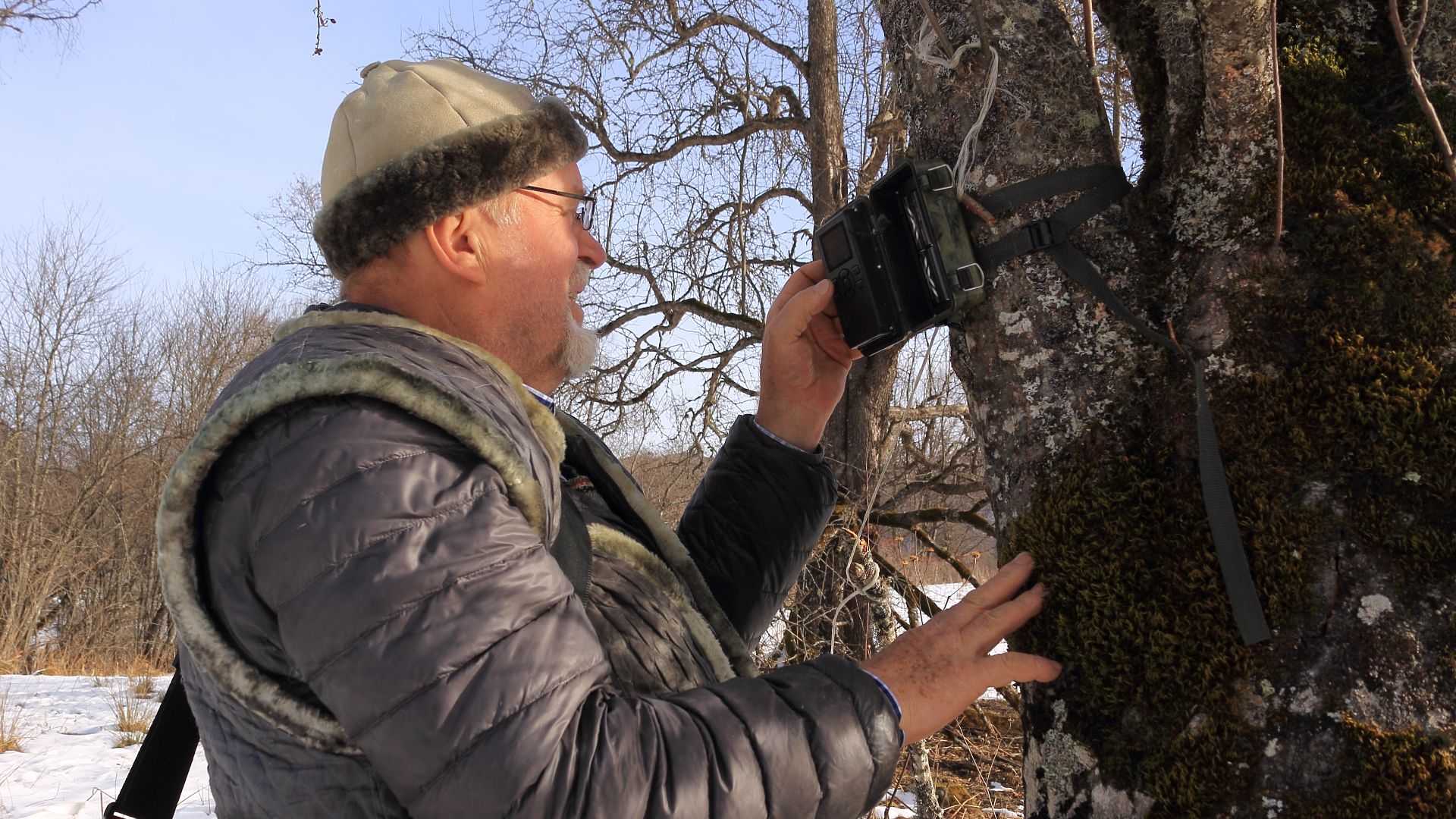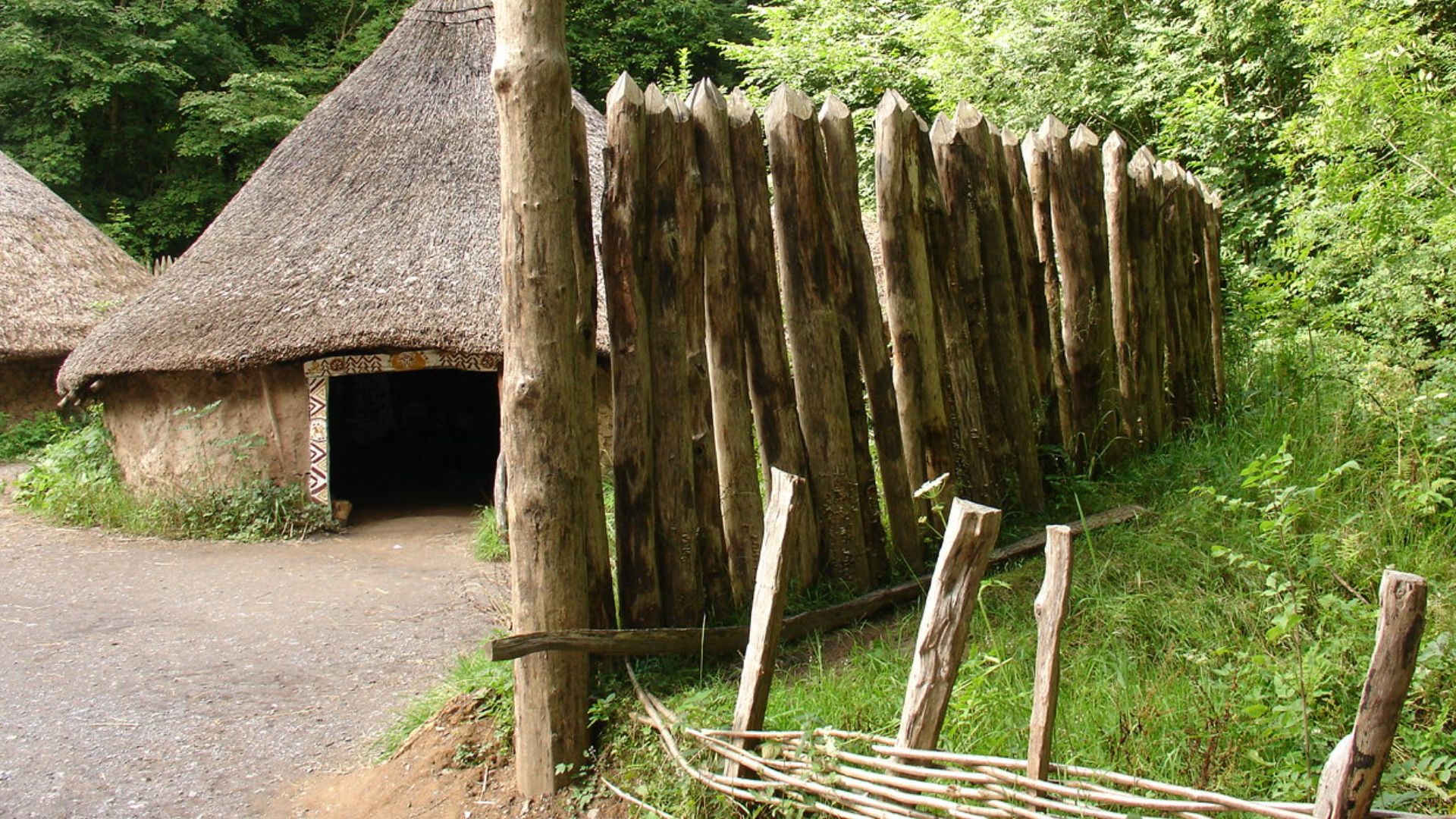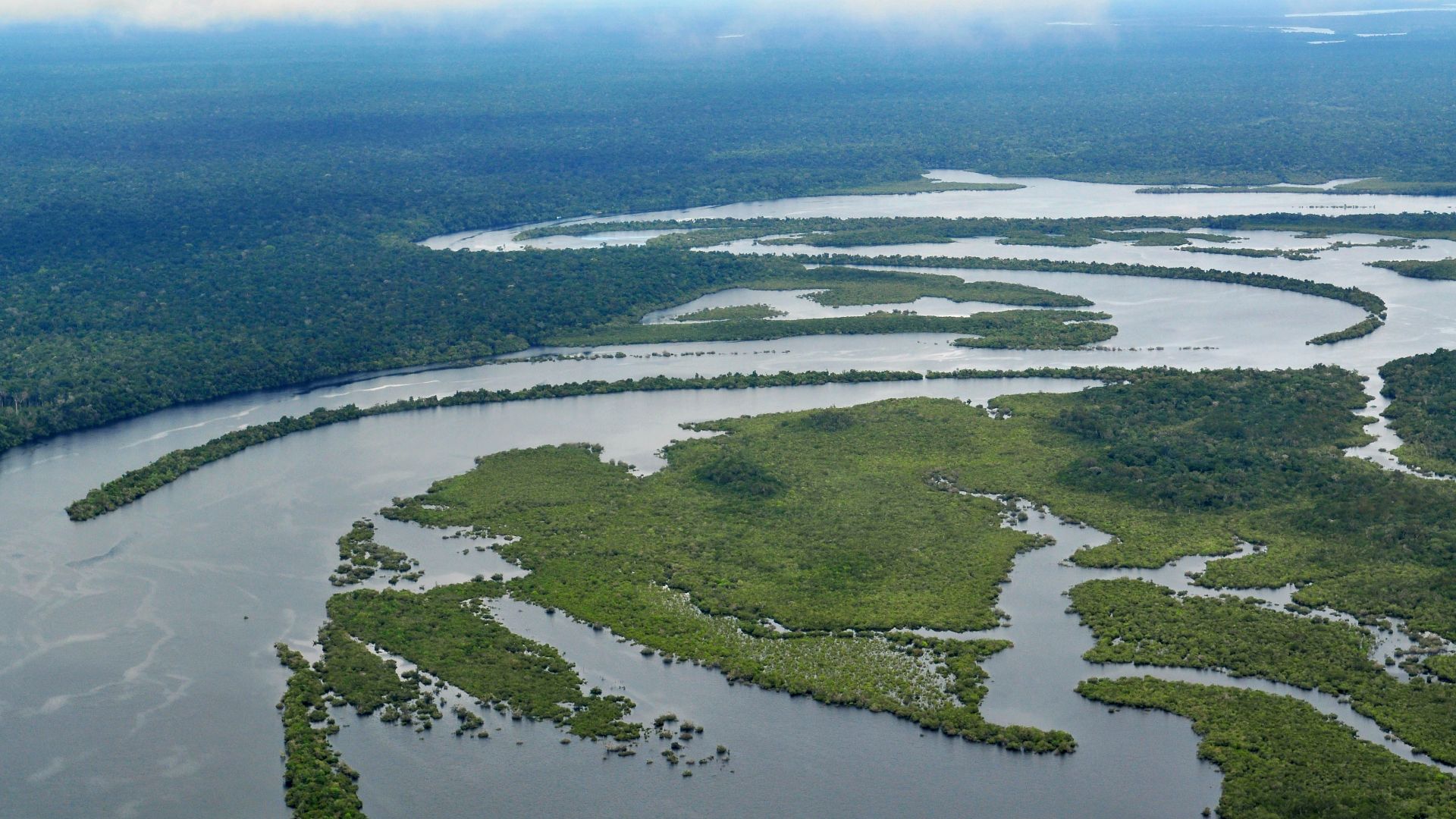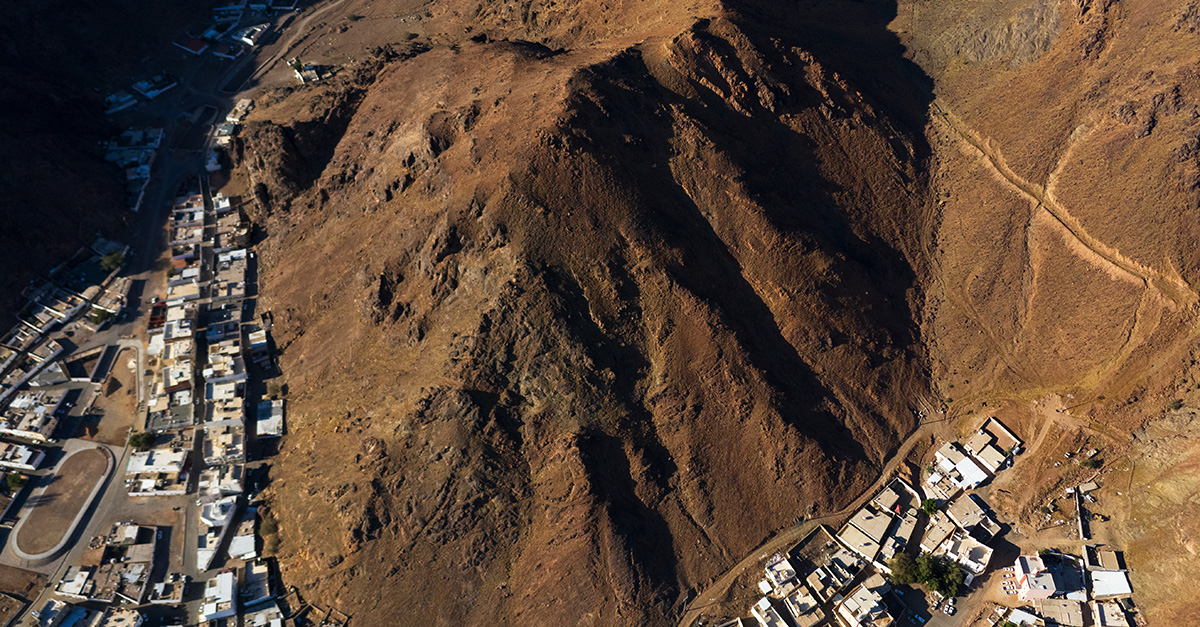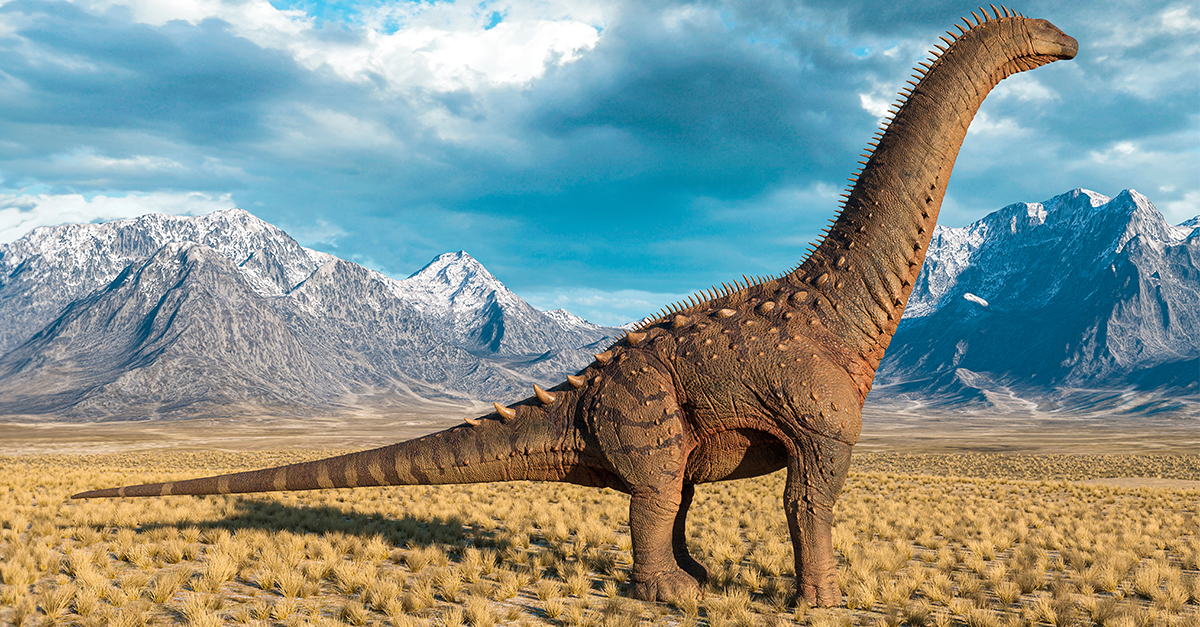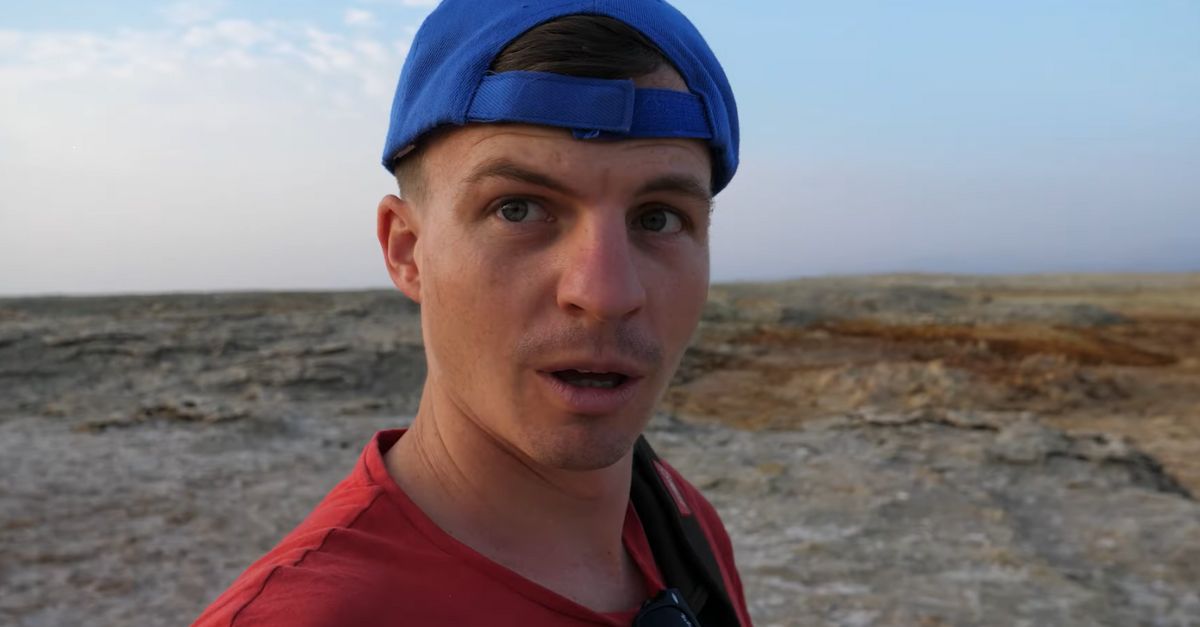A Rare Glimpse Into an Untouched World
For decades, the Massaco tribe lived completely unseen, hidden deep within Brazil’s Amazon rainforest. But in a stunning breakthrough in 2024, cameras captured the first clear images of this uncontacted group—offering a rare window into a community that has thrived entirely apart from modern society. Their way of life, untouched by the outside world, is both astonishing and deeply important to preserve. This is their story.
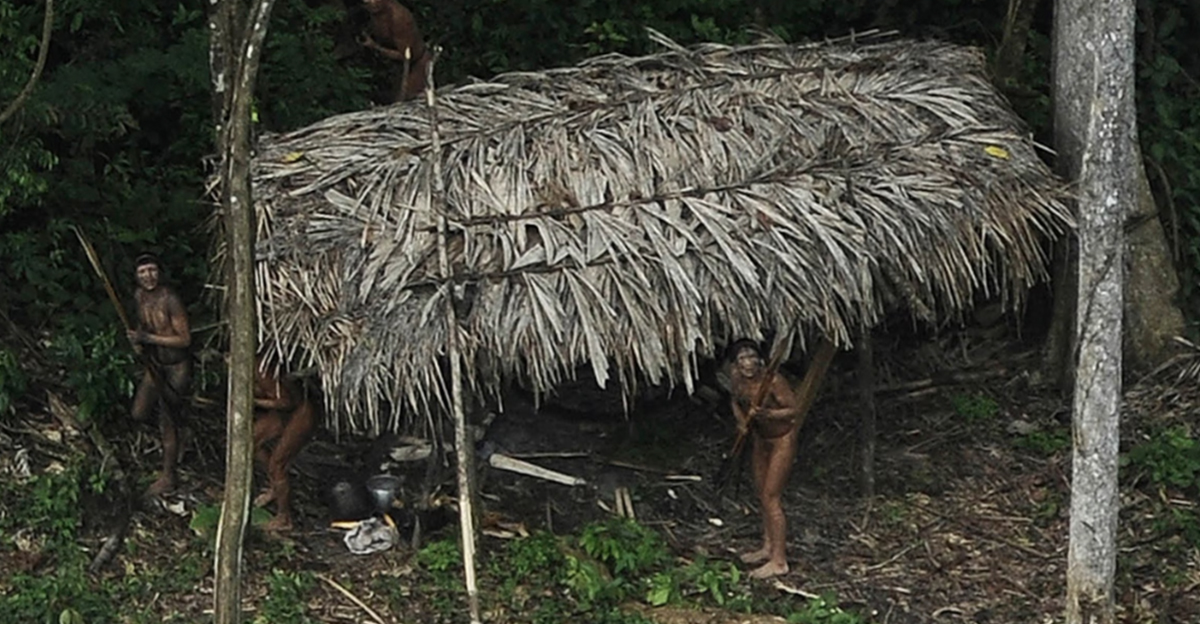
Secret Lives Along the Massaco River
The tribe lives in a huge reserve in Rondônia near Brazil’s border with Bolivia. Named after the Massaco River, their community spans over 421,000 hectares where no outsiders enter. Though called "Massaco" by others, we still don’t know what they call themselves. Their world remains mysterious—but now, it's finally coming into view.
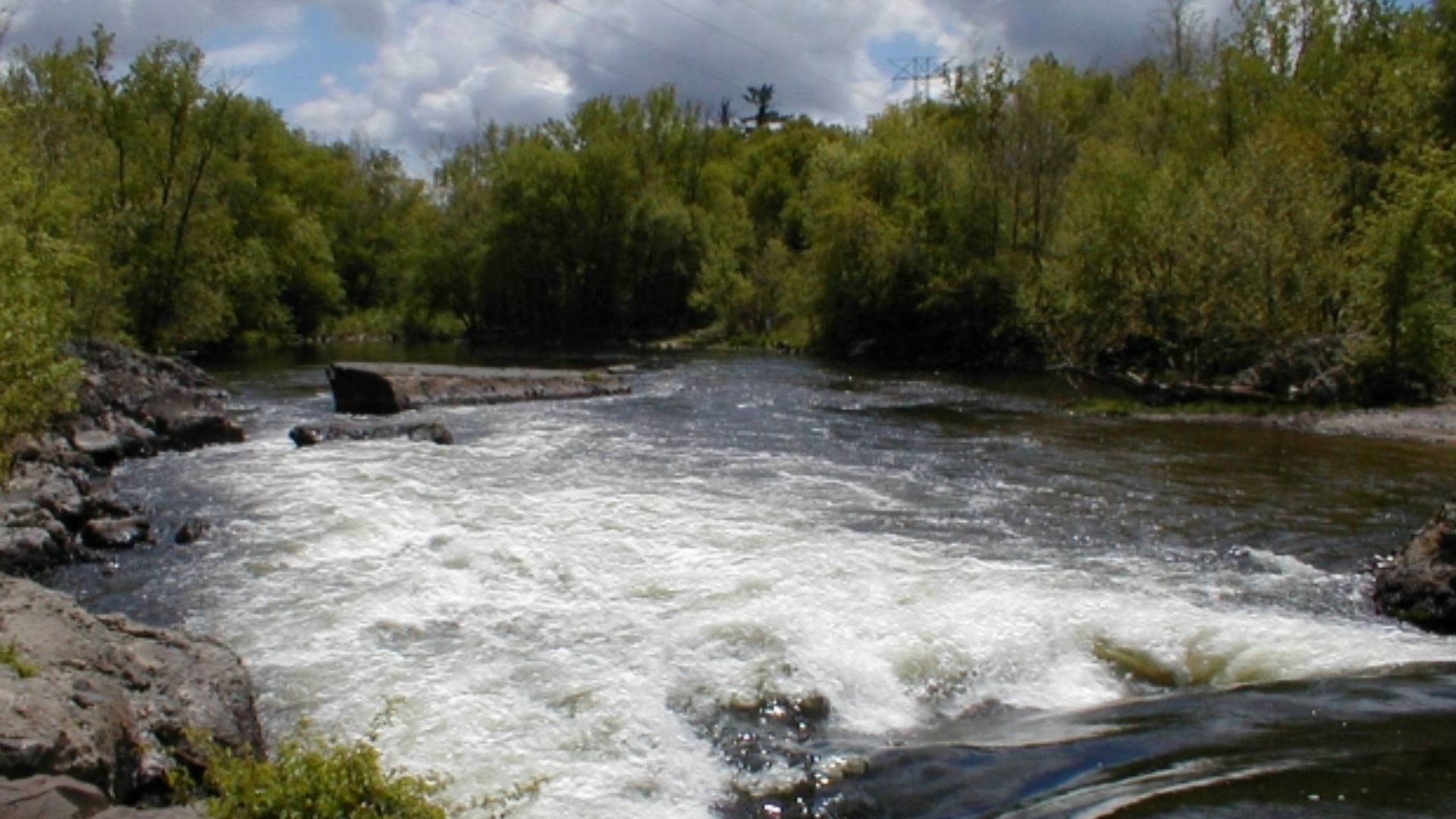 YankeeGuy at English Wikipedia, Wikimedia Commons
YankeeGuy at English Wikipedia, Wikimedia Commons
What Do They Live In?
The Massaco build seasonal huts called tapiris, constructed from palm and thatch. They move from one part of the forest to another depending on food availability and weather. This seasonal mobility helps them avoid outsiders and stay hidden in the dense rainforest.
 Uncontacted tribe found in Brazil's Amazon, Al Jazeera English
Uncontacted tribe found in Brazil's Amazon, Al Jazeera English
How Many Are There?
In the early 1990s, the Massaco numbered about 100–120 people. Today, photos and satellite images suggest 200–300 individuals—possible rising to 300 based on new huts and footprints. That’s remarkable growth for a tribe that’s never had formal contact.
 Rare footage of largest uncontacted tribe in the world shows 'disaster in the making', The Telegraph
Rare footage of largest uncontacted tribe in the world shows 'disaster in the making', The Telegraph
What Do They Look Like?
Images suggest Massaco adults often wear no clothing. They carry wooden sticks and have long hair or moustaches. Their bare bodies blend into the forest shadows—natural camouflage, not exhibition.
 Footage of uncontacted tribesman in the Amazon rainforest, Guardian News
Footage of uncontacted tribesman in the Amazon rainforest, Guardian News
Their Language and Beliefs Are a Mystery
No one knows their language or belief system. They appear culturally distinct from nearby tribes, though some say they resemble the Sirionó people. Their skull totems hint at spiritual life, but most remains hidden.
Skull Totems and Cultural Clues
Photos reveal mysterious stacks of animal skulls, hinting at spiritual or symbolic meanings. While we don’t fully understand the reasons, these totems suggest ritual practices and a deep connection with wildlife.
Building Trust
To avoid direct interaction, Funai (Brazil’s Indigenous agency) leaves tools like machetes and axes at forest edges. The Massaco pick them up and carry them back, showing they’re curious yet cautious—using modern tools without letting outsiders in.
Nine Men Captured on Camera
Trail cams in February 2024 caught nine Massaco men, estimated aged 20 to 40, collecting tools left nearby. They appeared healthy and confident—silent proof of their continuing existence and strength.
 Video shows uncontacted tribe near Indonesia's nickel mine, The Independent
Video shows uncontacted tribe near Indonesia's nickel mine, The Independent
How Do They Stay Hidden?
The Massaco move when outsiders get too close. They leave one place and set up new tapiris further into the forest. This mobility—plus their traps and camouflage—has kept them safe from contact for decades.
 3 Easy Spring Snare Traps ~ Primitive ~ Survival, Clan Gunn Bushcraft
3 Easy Spring Snare Traps ~ Primitive ~ Survival, Clan Gunn Bushcraft
Nature, Not Disease, Is Their Biggest Threat
Brazil’s 1987 no-contact policy helps protect tribes like the Massaco from diseases outsiders carry. That rule, paired with protected territory, has allowed the tribe to thrive—despite threats from illegal logging and ranchers.
Watching Without Disturbing
Researchers rely on trail cameras, satellite observations, and tool drops—not body-breaking contact—to monitor the Massaco. The tribe rarely approaches cameras, showing their cautious awareness of human intrusion.
Village Counts and Territory Clues
Funai has documented up to 174 separate hut sites, indicating around 50 families. Satellite maps show patterns of grassland burning before rainy seasons—clearing spots for planting or living.
 Ícaro Patté, Wikimedia Commons
Ícaro Patté, Wikimedia Commons
They Burn to Regrow
Seasonally, the Massaco burn grassland patches before moving in. Fresh growth arrives as rains start, drawing wildlife and edible plants—smart planning that shows their intimate ecological knowledge.
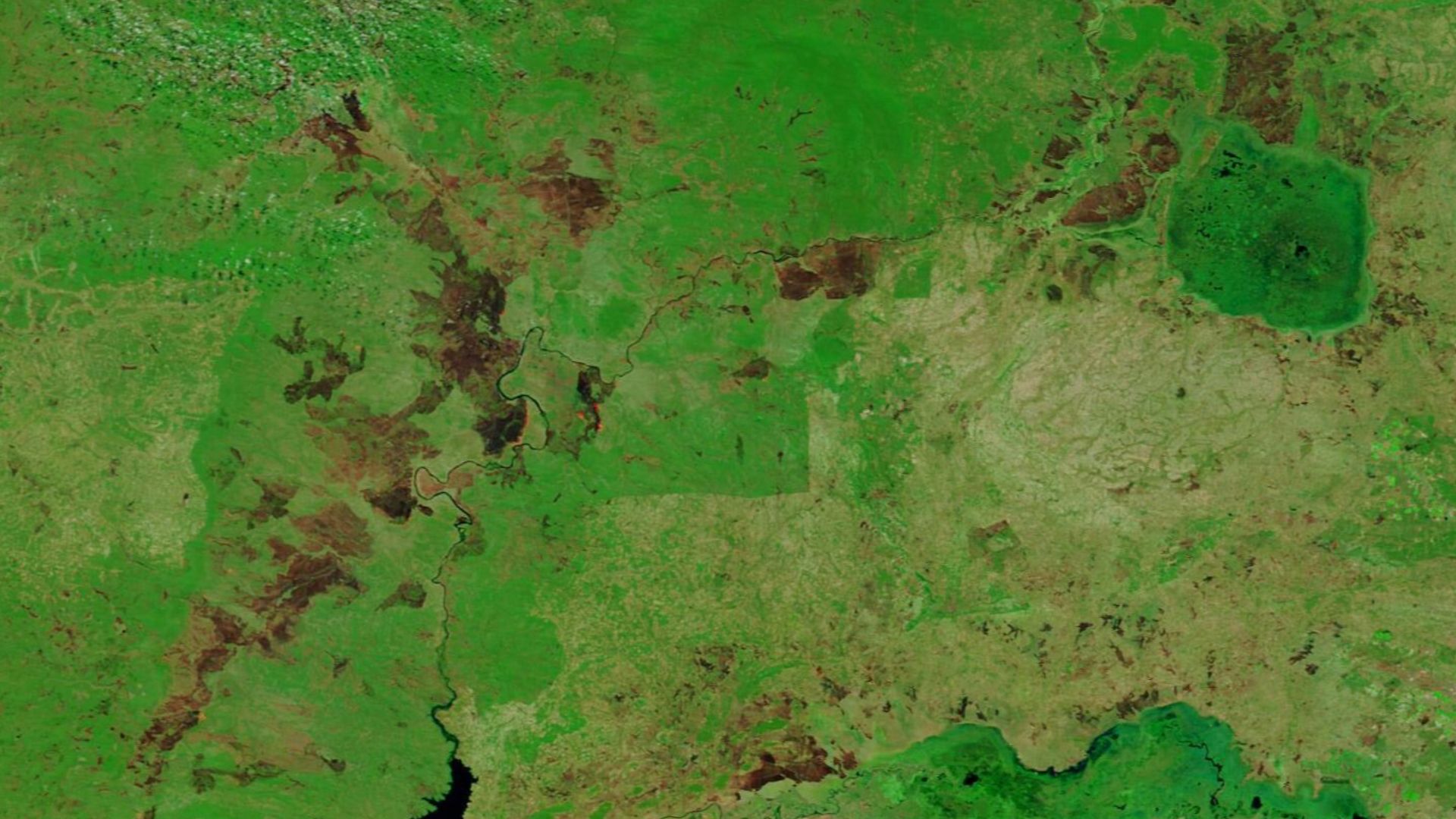 MODIS Land Rapid Response Team, NASA GSFC, Wikimedia Commons
MODIS Land Rapid Response Team, NASA GSFC, Wikimedia Commons
Giant Bows, Tiny People
They hunt using astonishing longbows stretching over three meters! These bows seem incredibly unwieldy, but the Massaco use them with skilled precision to hunt game—possibly tapirs or monkeys.
 Tribe sharpens arrows against Amazon invaders, AFP News Agency
Tribe sharpens arrows against Amazon invaders, AFP News Agency
Hunters Crafted to Survive
Their hunting strategy is simple yet effective: stealth, longbows, and knowledge of the forest. They move seasonally to richer hunting and foraging spots—no fixed fields, but an intuitive understanding of their land that few modern societies possess.
And what they use to defend themselves is equally as impressive.
 Footage of uncontacted tribesman in the Amazon rainforest, Guardian News
Footage of uncontacted tribesman in the Amazon rainforest, Guardian News
A Hidden Defense System
Massaco territory is defended with thousands of hidden hardwood spikes planted in paths and trails. These spikes can pierce tractor tires and are a clear “stay away” message. They’ve even damaged vehicles sent into their territory.
The No Contact Rule Is Serious
Even other Indigenous groups respect the Massaco territory. The government enforces no-contact rules tightly. This isolation is intentional—to preserve the tribe from diseases and cultural collapse others experienced.
Illegal Encroachment: Still a Danger
Despite protections, illegal loggers, ranchers, and drug traffickers threaten their borders. Funai warns that low funding and mounting environmental pressures put the tribe at risk—even if they remain unseen.
 Illegal Loggers: The Tribe Waging War in the Amazon, VICE News
Illegal Loggers: The Tribe Waging War in the Amazon, VICE News
Funai Keeps Watch
Led by veteran agent Altair Algayer, Funai monitors Massaco territory using remote cameras, tool drops, and satellite tracking. Algayer has worked in the region since 1992, documenting huts, traps, and movements to prove the tribe’s existence.
 'Funai is ours’: Brazil’s Indigenous affairs agency is reclaimed under Lula, Mongabay
'Funai is ours’: Brazil’s Indigenous affairs agency is reclaimed under Lula, Mongabay
Why These New Photos Matter
These are the first clear images of the Massaco tribe—game-changing visuals that confirm their presence and resilience. They’re vital for pushing governments to enforce protections and stop exploitation.
 Uncontacted tribe found in Brazil's Amazon, Uncontacted tribe found in Brazil's Amazon
Uncontacted tribe found in Brazil's Amazon, Uncontacted tribe found in Brazil's Amazon
Still a Mystery… Until Now
For centuries, the Massaco remained invisible. But now, thanks to careful observation, we’re finally seeing evidence of their lives—tools, huts, traps, and humans living deep in the rainforest. And yet, their full story is still a secret.
 Uncontacted tribe found in Brazil's Amazon, Uncontacted tribe found in Brazil's Amazon
Uncontacted tribe found in Brazil's Amazon, Uncontacted tribe found in Brazil's Amazon
What Do We Still Don’t Know?
We know almost nothing about their language, their name for themselves, their spiritual beliefs, or how they organize families or leadership. This tribe is still a living mystery.
Their Secret Superpower
The Massaco’s ultimate strength? Complete invisibility in a changing world. They’ve thrived in isolation, grown in numbers, and protected their land—all without a treaty, a settlement, or a single public contact. Their very survival is a silent declaration.
Why It Matters to All of Us
The Massaco are a reminder that not all cultures should be uncovered. Their existence challenges us to respect different ways of life—and protect them rather than exploit them. Their story asks: can modern society let them remain… just as they are?
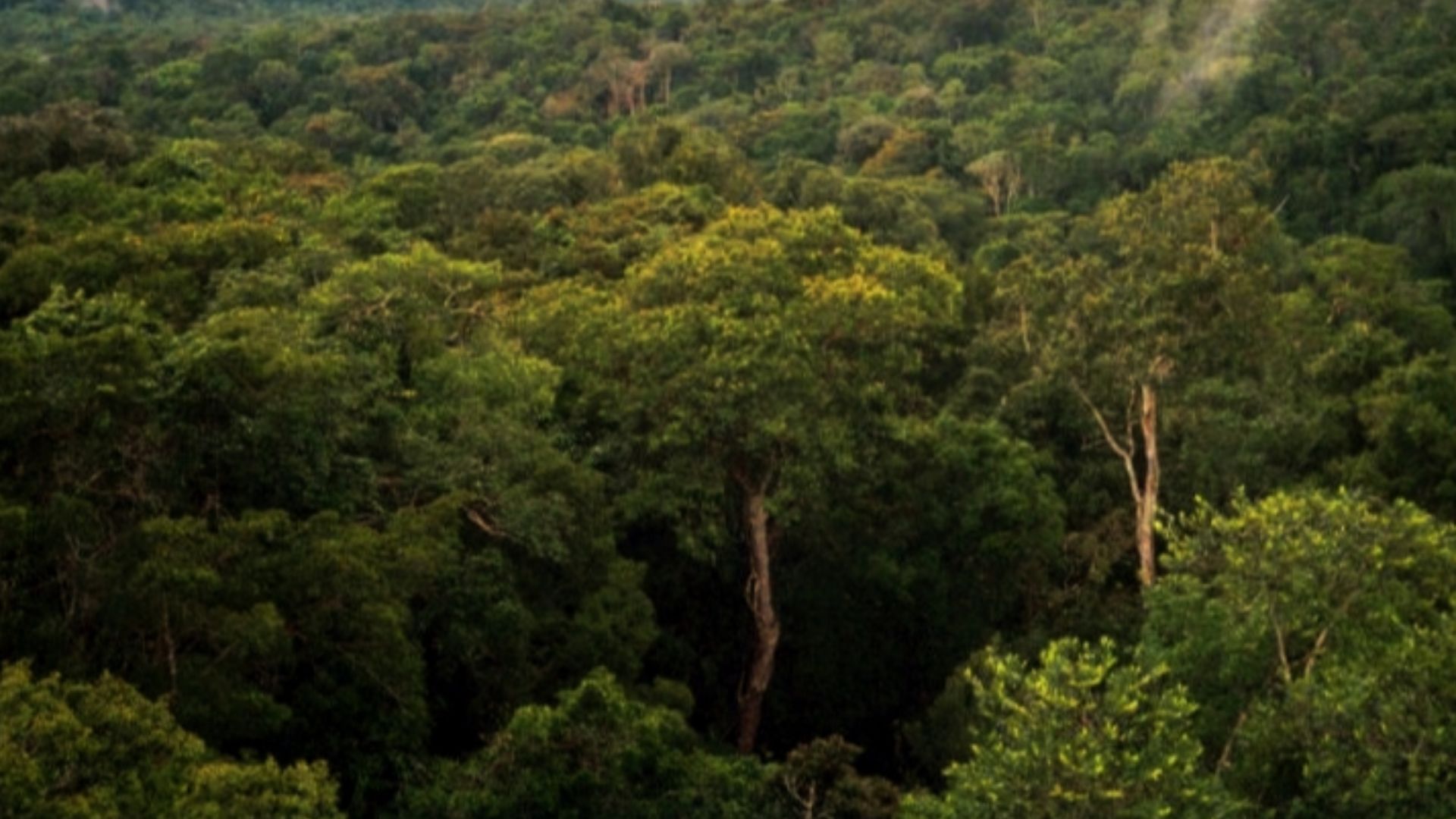 Phil P Harris., Wikimedia Commons
Phil P Harris., Wikimedia Commons
You May Also Like:
The Samburu People of Kenya
Photos Of The Crocodile Men of Papua New Guinea
The Traditional Life of the Zulu


